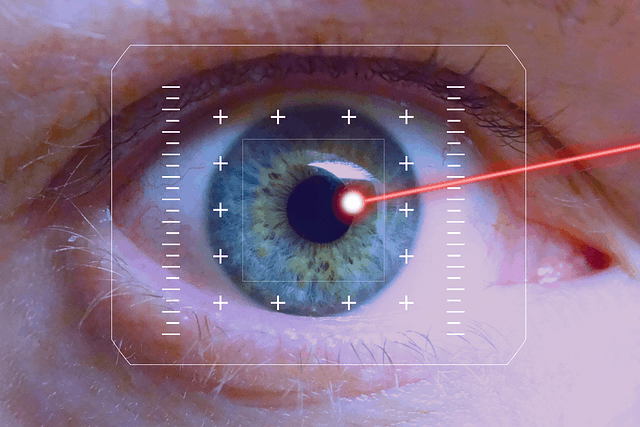If you’re tired of dealing with glasses or contacts every single day, you’ve probably thought about LASIK. Imagine waking up in the morning and being able to see clearly without fumbling for your specs or poking around for your contact lenses.
Sounds amazing, right? But before you dive in, it’s important to weigh the pros and cons. LASIK promises life-changing results for many, but like any surgery, it’s not a one-size-fits-all solution. Let’s break it down.

The Clear Advantages of LASIK—Why Millions Are Opting In
Proven Results and Life-Changing Benefits
Let’s get straight to it: LASIK works. Studies show that 96% to 98% of patients hit their vision goals, with many achieving better-than-20/20 eyesight. That means no more blurry mornings or scrambling to find your glasses when you need to check the time.
For a lot of people, LASIK is a game-changer. You can swim, run, or binge-watch your favorite shows without a second thought about lenses.
Speedy and Convenient Procedure
Long-Term Cost Savings
Let’s talk money. Sure, LASIK can feel pricey upfront. But think about how much you spend on glasses, contact lenses, cleaning solutions, and annual eye exams. Over time, those costs add up. LASIK could actually save you money in the long run—and save you the hassle of constant replacements and upgrades.

The Potential Downsides—What You Need to Consider
Temporary Side Effects and Discomfort
Like any surgery, LASIK comes with a few temporary annoyances. Right after the procedure, your eyes might feel dry or a bit scratchy, like there’s something stuck in them. You could also see halos or glare around lights, especially at night.
But don’t worry—these side effects usually clear up within a few months. In the meantime, artificial tears can help keep things comfortable.
Not Everyone Is a Candidate
But don’t stress—there are other options, like PRK or SMILE, that could work better for you.
The Risk of Regression and Age-Related Changes
LASIK offers permanent results, but that doesn’t mean your vision won’t change over time. If you had a high prescription to begin with, there’s a chance your eyesight could regress a bit. Plus, as you hit your 40s and beyond, presbyopia (the need for reading glasses) might kick in.
The good news? Even with these changes, your vision will likely still be much better than before LASIK.
| Feature | Pros of LASIK | Cons of LASIK |
|---|---|---|
| Effectiveness | 96–98% achieve vision goals (20/20 or better) | Potential vision regression over time |
| Procedure Duration | Just 20 minutes | – |
| Recovery Time | Quick: 1–2 days | Temporary dryness or glare around lights |
| Long-Term Costs | Saves on glasses, lenses, and care products | High upfront cost |
| Everyday Comfort | Freedom from glasses and contacts | Temporary glare and halos around lights |
| Risks | Serious complications are extremely rare (<1%) | May not be suitable for thin corneas or specific conditions |
| Eligibility | Stable prescription and healthy eyes | Not suitable for unstable prescriptions or certain conditions |
| Alternatives | – | PRK, SMILE, glasses, or contacts |

Weighing the Risks—How Safe Is LASIK?
Understanding Rare but Serious Risks
Vision loss? That’s even rarer—less than 1 in 10,000 cases. Still, it’s crucial to understand these risks so you can make an informed decision.
Why Choosing the Right Surgeon Matters
Here’s where things get real: your surgeon’s experience matters—a lot. The right doctor will evaluate your eyes thoroughly, use the latest technology, and guide you through every step of the process.
Look for someone with a solid track record and glowing reviews. A skilled surgeon not only reduces your risk of complications but also boosts your chances of hitting that 20/20 mark.
Is LASIK Right for You? Factors to Keep in Mind
Your Lifestyle and Vision Goals
Think about how LASIK fits into your daily life. If you’re active and glasses get in the way, or if you’re just done with the hassle of contacts, LASIK could be a perfect match.
For older adults, there’s also the option of monovision, which corrects one eye for distance and the other for close-up tasks. Not everyone adjusts to it, but it’s worth exploring if reading glasses aren’t your thing.
Alternatives to LASIK
Conclusion
LASIK can change your life. The benefits – clear vision, convenience, and long-term savings – are hard to ignore. But it’s not without risks and limitations. If you’re considering it, take the time to consult with a qualified surgeon and weigh your options.
LASIK may be the solution you’ve been dreaming about. But if it’s not for you, there are many other ways to achieve clearer vision. Whatever you choose, make sure it fits your lifestyle and long-term goals.





